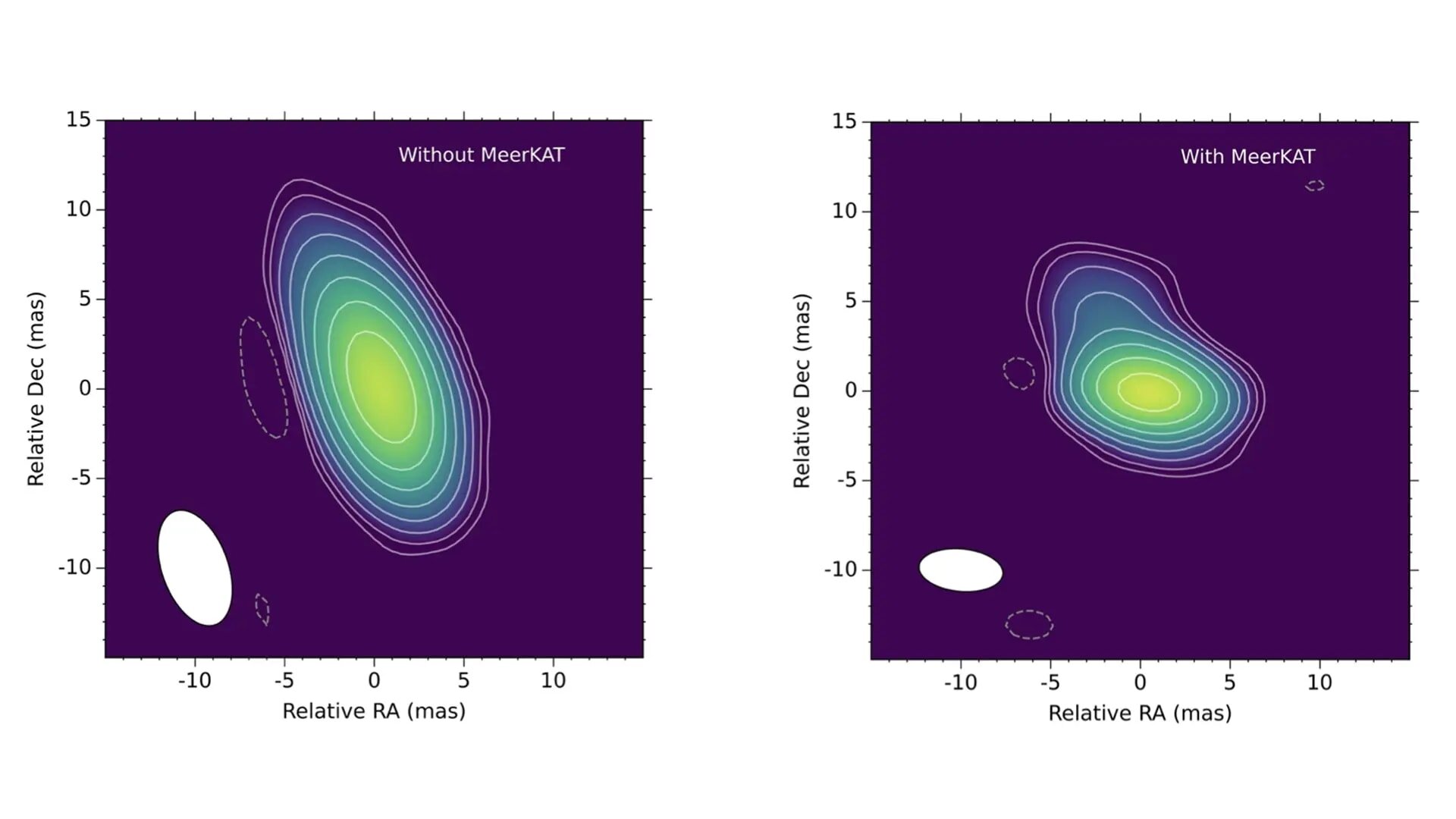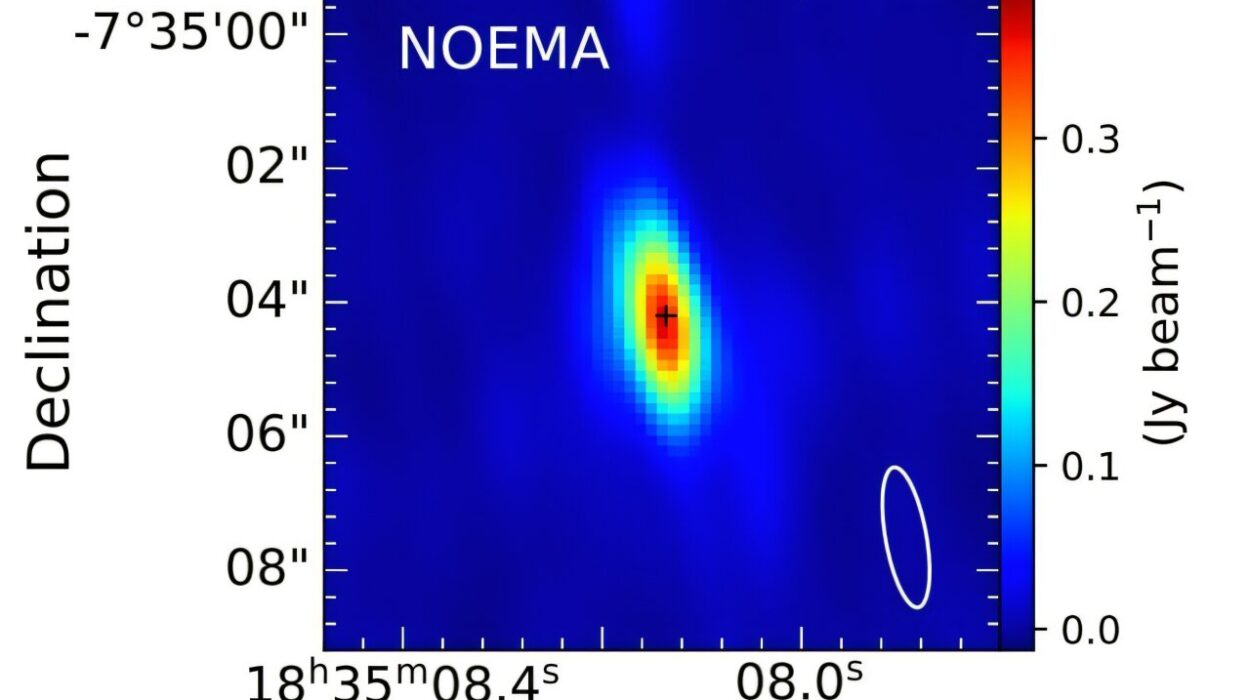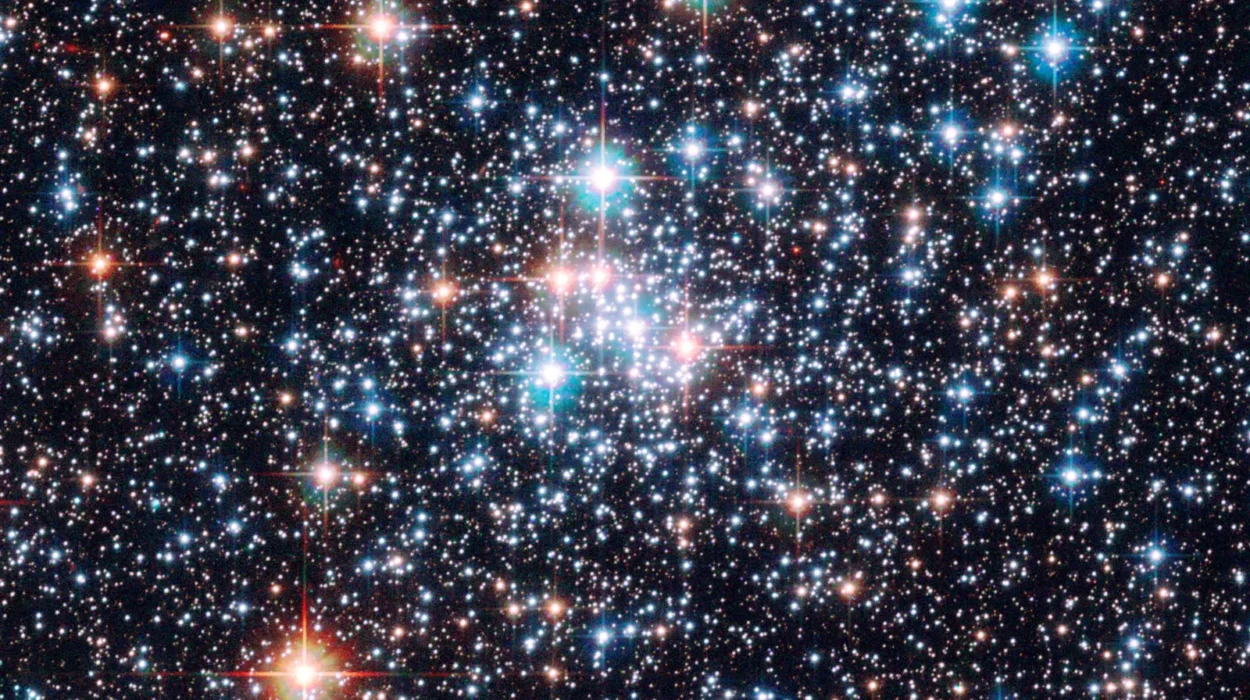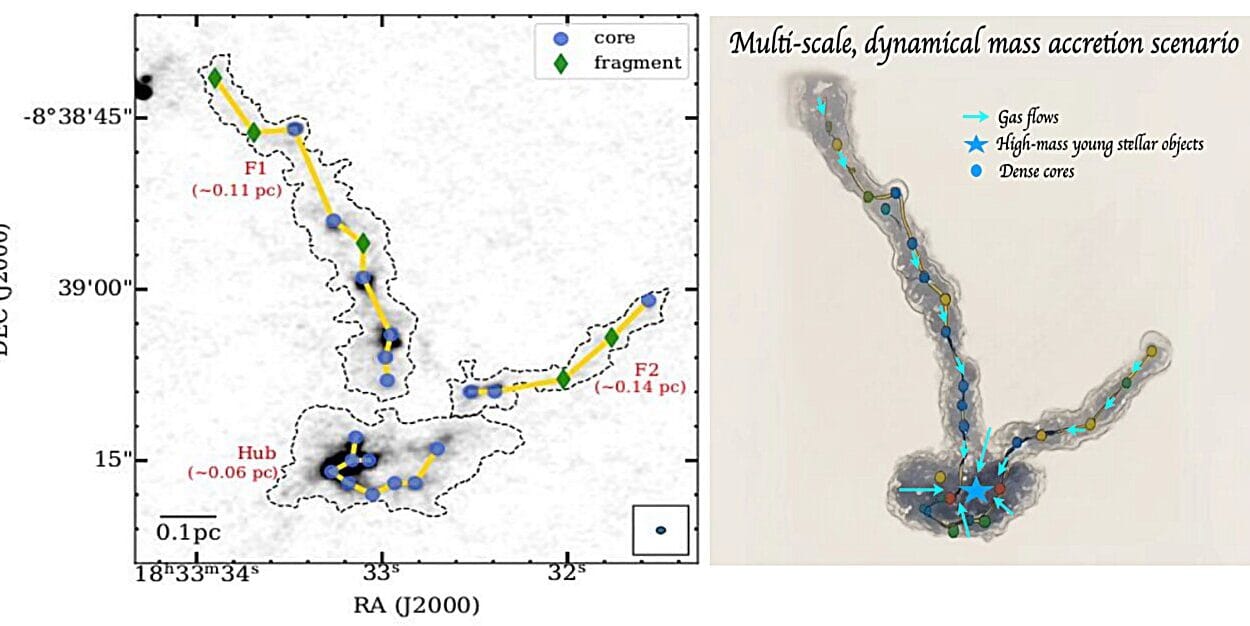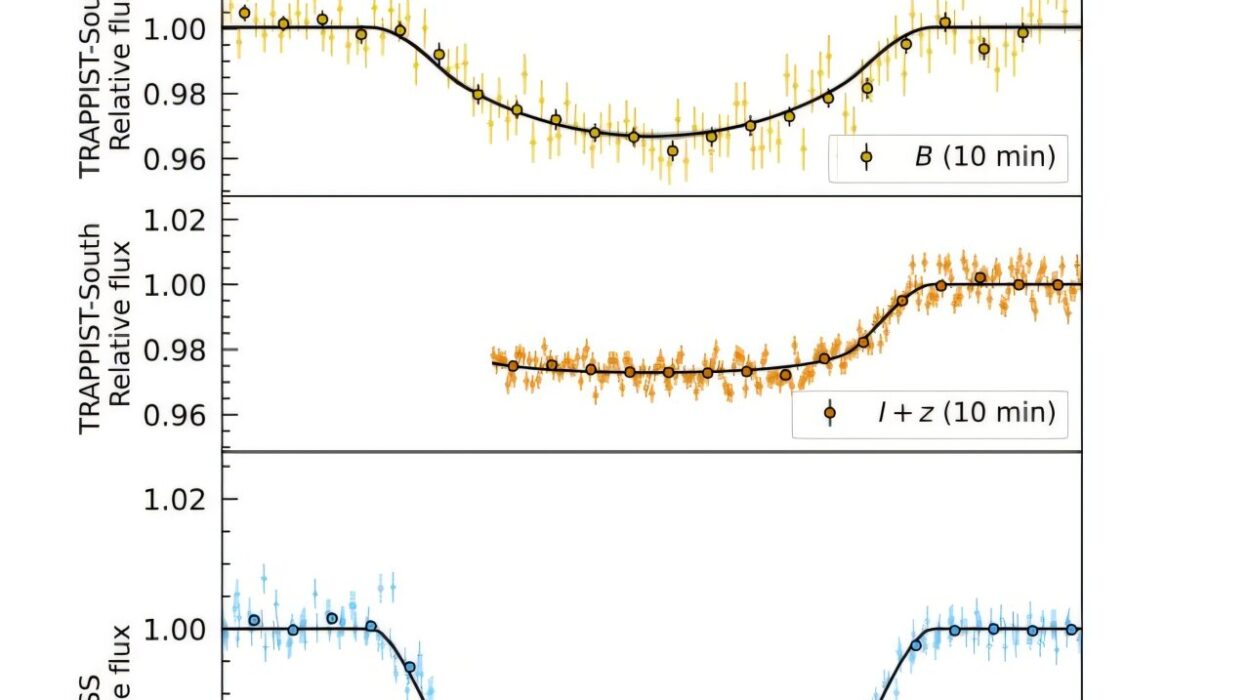On a rocky plateau in South Africa’s remote Karoo region, 64 radio dishes stand vigil beneath a wide, unpolluted sky. They belong to MeerKAT, Africa’s most advanced radio telescope, and they have just made scientific history.
For the first time, MeerKAT has joined the ranks of the world’s largest and sharpest radio telescope network—the European VLBI Network (EVN)—to capture an image so detailed, so breathtakingly sharp, it reshapes how we see the universe. Together, these distant instruments have peered across the cosmic abyss and brought into focus a colossal jet of plasma erupting from a supermassive black hole in a faraway galaxy.
This is more than a photograph of deep space. It’s a milestone in international science. It’s a preview of the future of astronomy. And it’s a promise that when minds and machines unite across continents, even the universe itself becomes just a little more knowable.
An Interstellar Snapshot, Centuries in the Making
The target of this unprecedented gaze was galaxy J0123+3044, a luminous smudge in the night sky located hundreds of millions of light-years away. At its heart lies a black hole so massive it warps spacetime. From it bursts a narrow, brilliant jet of high-energy plasma—matter accelerated to near-light speed and flung out with terrifying force.
Such jets have fascinated astronomers for decades. They’re among the most extreme phenomena in nature, powered by the same invisible monsters that anchor galaxies. But they’re notoriously difficult to see in detail—unless you have a telescope the size of Earth.
That’s where very long-baseline interferometry, or VLBI, comes in.
By combining radio telescopes spread across the globe—from China to Sweden, Spain to South Korea—scientists create a single, virtual telescope that can measure details smaller than a pinhead seen from thousands of kilometers away. And now, for the first time, they’ve added MeerKAT to that powerful network.
The result: an image of the black hole’s jet with unprecedented clarity.
The Power of Many
“This is a big step forward,” said Jun Yang, an astronomer at Sweden’s Onsala Space Observatory. “MeerKAT, with its 64 antennas, is as sensitive as a single dish antenna with a diameter of 100 meters. That kind of sensitivity dramatically improves image quality.”
The implications stretch far beyond one black hole. This marks a crucial technical achievement—a proof of concept that southern hemisphere telescopes like MeerKAT can seamlessly integrate with northern instruments, expanding the reach and power of global astronomy.
And that matters a great deal for what comes next: the Square Kilometre Array (SKA), the world’s largest radio telescope, currently under construction in Australia and South Africa.
Paving the Way for the SKA Era
The SKA will be a game-changer for science. When complete, it will allow astronomers to see the universe with a thousand times more detail than ever before. They’ll study the formation of the first galaxies, trace the cosmic web of dark matter, and even test the limits of Einstein’s theories.
Both MeerKAT and EVN are considered precursors to the SKA, serving as testbeds for the technology and cooperation the next-generation observatory will demand.
Already, researchers are planning to link the SKA-Mid telescope in South Africa with other global arrays—exactly as MeerKAT has just done.
What this recent success shows is that such cooperation isn’t just possible—it’s productive, even transformative. The system works. The sky is open.
Global Science, Local Roots
Built and operated by the South African Radio Astronomy Observatory (SARAO), MeerKAT was inaugurated in 2018 and quickly gained recognition for its high sensitivity and imaging power. Its dishes—each 13.5 meters across—are arranged over an 8-kilometer area in the quiet desert of the Karoo, far from radio interference.
But MeerKAT is more than a scientific instrument. It’s a national symbol of innovation and global leadership in astronomy. It’s also a driver of local development, offering training, education, and employment in surrounding communities.
Now, as it joins the EVN’s elite ranks, it also takes a central role in the planet-wide effort to understand the cosmos.
The EVN, operated by the Joint Institute for VLBI in Europe (JIVE), connects radio telescopes across Europe, Asia, and now Africa, creating a baseline of up to 9,000 kilometers. By synchronizing observations with atomic precision, these facilities effectively become a single, Earth-sized dish—capable of capturing the faintest whispers of radio waves from the farthest reaches of the universe.
For the recent observation of galaxy J0123+3044, the array included antennas from China, Germany, Italy, Latvia, the Netherlands, Poland, South Korea, Spain, the United Kingdom, and Sweden—as well as South Africa’s Hartebeesthoek Radio Observatory. And at the heart of it all, for the first time, was MeerKAT.
A New Kind of Cosmic Vision
This unprecedented collaboration isn’t just about technical prowess. It’s about storytelling on a cosmic scale—about understanding how galaxies evolve, how black holes shape their environments, and how the universe became what it is today.
The addition of MeerKAT made the difference between a fuzzy outline and a crisp portrait. It allowed researchers to see the fine structure of the black hole jet in galaxy J0123+3044—structures that were previously invisible. These details matter. They help scientists understand the physics of plasma, the dynamics of black hole spin, and even the role such jets play in regulating star formation.
In short, it’s another piece of the grand puzzle of existence, now visible because humanity dared to connect its instruments, its scientists, and its skies.
The Sky Is No Longer the Limit
This isn’t just about astronomy. It’s about what happens when nations choose collaboration over competition, when science becomes a shared endeavor. It’s about building telescopes that span continents and knowledge that spans generations.
Sweden is on the verge of becoming a full member of the SKA Observatory, joining a global collaboration of countries committed to building and operating the world’s most advanced radio telescopes. That collaboration, now proven by MeerKAT’s successful integration with the EVN, is more than a scientific achievement—it’s a signal that the future of exploration is planetary.
The stars may be billions of light-years away. But with each new connection—from Karoo to Onsala, from Manchester to Madrid—we draw just a little closer to understanding our place in the vast, unfolding story of the universe.
